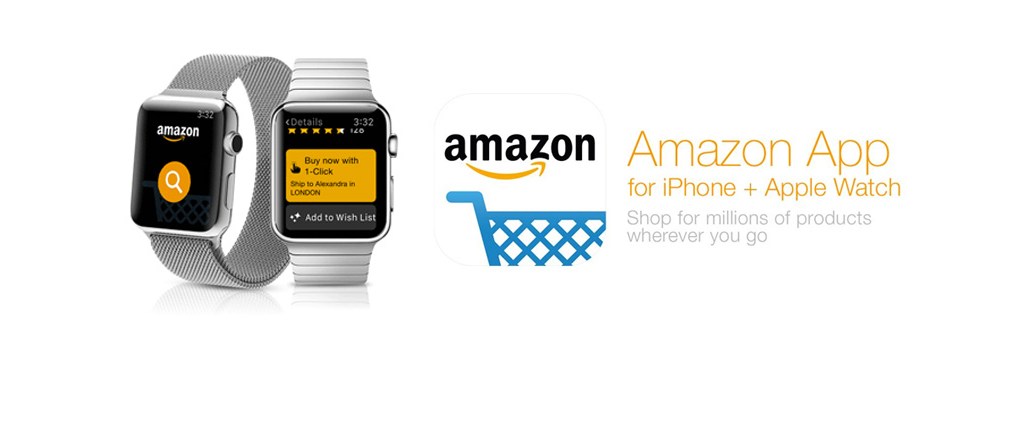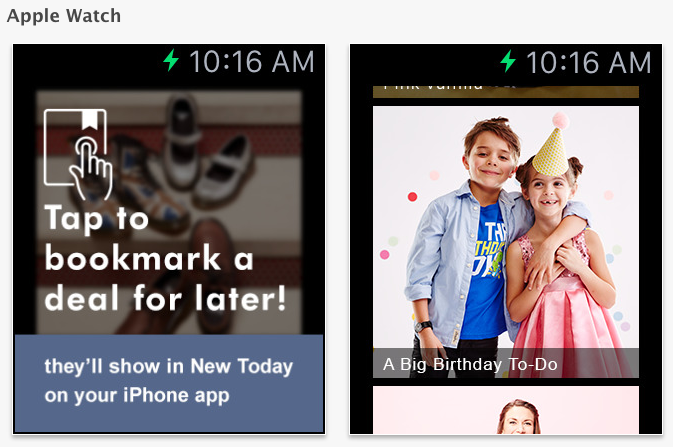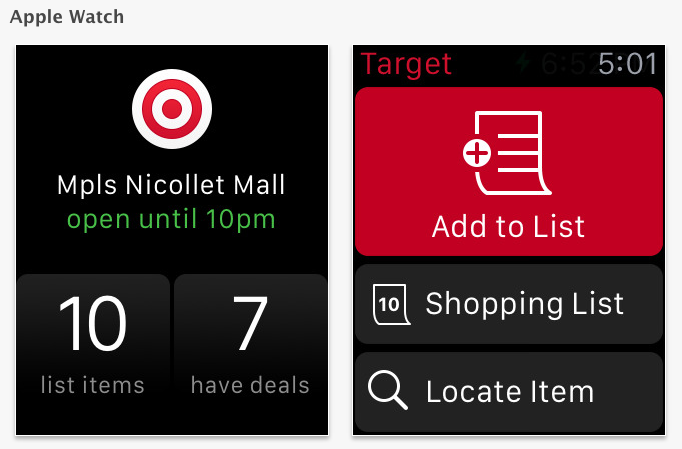Insights from CTV leaders at Dentsu, Horizon Media and more

The Apple Watch is about to introduce another commerce channel to consumers.
Available today in-store as a limited boutique release, Apple’s newest gadget is being slated as both the wearable-to-end-all-wearables and (somewhat more questionably) a new piece of luxury arm candy, with prices running as high as $17,000.
The watch’s small screen has presented a challenge for the earliest retail adopters. As consumers begin shopping on their phones, the Apple Watch’s commerce apps must bring something to the table other than an additional, scaled-down storefront, according to industry analysts. But they shouldn’t overcomplicate things either — some of the more-promising retail apps have just one function.
Amazon, Target, eBay and Zulily have each updated their apps to work with the Apple Watch. Here’s a look at how these retailers are making the most out of the timepiece’s modest real estate.
One click to buy.
The less time consumers have to spend studying their wrist to complete a purchase, the better. Amazon is bringing its click-to-buy model to the device, another step toward its goal of making mindless refills of go-to purchases the norm. While shopping around for major purchases is unlikely to take place all on the Watch, items that are continually purchased, like Tide or toilet paper, can be re-ordered with a tap.
Beyond that, Amazon seems to be the only retailer going for the full search, browse and shop experience on the watch. But not everyone is convinced that’s the right track to take. “I wonder what you would actually buy on a small screen, when your phone is right there,” said Daz McColl, SapientNitro’s global chief of brand strategy. “It’s going to be interesting to see what will happen there.”
Bookmarking.
Retailers are using the Apple Watch to bring the shopping experience front of mind, even if the actual purchasing happens later. Amazon may be going for the full shopping experience. Others, like Zulily, a flash sale e-commerce space targeted to moms, has taken a narrower approach: its app lets users add to their wish lists from their wrists, as well as bookmark something to view later, when they’re looking at a bigger screen.

Real-time auctions.
Constantly placing bids on eBay items? The Apple Watch could become your next obsession. The eBay app on the watch, like Zulily, only has one function — tracking your outstanding auctions and letting you adjust your bid. You’ll be pinged on your watch if you’ve been outbid, or if you’ve won something, but you can’t browse for products.
Only having one core function on an Apple Watch app may sound like a narrow approach, but it could be a smart move for retailers. “The more complex we make things, the less likely we are to have a satisfying experience,” said McColl. “The solution is individualization — the utility has a high level of relevance to the individual.”
The Apple Watch is being touted as the company’s “most personal device yet,” making individualization is important to any retail strategy.
Smarter shopping lists
Target also built an app that only does one thing: shopping lists. Target shoppers can create a shopping list on the Target iPhone app, sync it to their watches, and head to a store. Then, as the shopper navigates the aisles, the Apple Watch will send a ping to let them know they’re approaching an item on their list.

This beacon-like functionality could ultimately provide clues as to how beacons might evolve going forward. But in the meantime, retailers will have to focus on whether shoppers will adopt the smaller screen as a necessary extension of their iPhones, similar to the way smartphones became carryable extensions of computers.
“Your phone does a lot that your computer used to do,” said McColl. “We’ve adapted to that small screen. Will that continue down the line to an even smaller screen? We’ll find out.”
More in Marketing

Retail media’s mid-2025 reality: Why advertisers are going all in on full-funnel
Retail media’s meteoric rise may finally be leveling off — and that’s forcing advertisers to take a harder look at what they’re getting for their money.

TikTok might be working on a standalone U.S. app, but marketers aren’t sold on the idea – yet
TikTok is developing a lifeboat for its American business, but media buyers are wary of advertising implications.

Bold Calls for the back half of 2025
Now’s a good moment as any to take stock —and make a few bold calls about what’s coming next.





